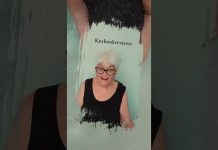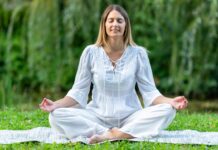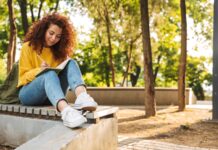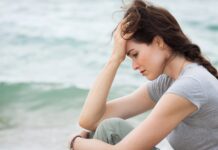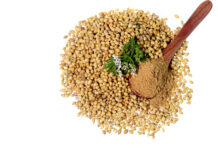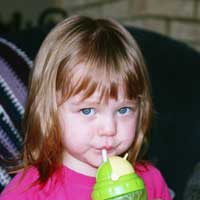
Chemical Free Kids National Program is educating Australians about Conscious Living in a toxic world
As a baby and toddler, Myla Adams was an international star, playing the lead role in over forty television commercials and countless magazines and promoÂtional materials. Most were for popular personal care products and processed foods aimed at babies and toddlers: she sat in a bubble bath and giggled while her golden locks of hair were washed with no-more-tears baby shampoo; her bottom was wiped with fragranced nappy wipes; gums smeared with prescripÂtion numbing gel for painful teething; and she promoted three different sugared cereals. These cereal commercials were played in six different languages across the world. During her pre-teen years, Myla walked through an orange orchard for a company promoting flavoured cordial saying, ‘It’s like drinking orange juice, only better.’ But what made her a real childhood star was her lead role in five different advertisements for a popular body spray aimed at teenage girls. These advertisements, with the promise of giving teenage girls instant friendÂships and lifelong happiness, were the catalyst which propelled the company to number one status in the body spray market. It was also this body spray that was the catalyst for the demise of Myla’s health.
At the age of 14, Myla was diagnosed with fibromyalgia and chronic fatigue. She now experiences severe chemical sensitivities to everyday products, particularly products containing fragrances and perfumes. She explains:
‘I don’t know exactly when it started, but I guess I just gradually started feeling more and more tired and run down. I remember when I was about twelve; I could smell things that other kids couldn’t. Like after swimming in the girls’ change rooms, everyone would spray deodorant around, particularly at me because I did the ad for it, and they would sing and dance around. But while everyone else would be oblivious to it, all that spray would make me really nauseous and dizzy.
{quotes}Other times I would just walk past someone and their perfume would make me sick. {/quotes}I can’t handle being around glues and paints and some rooms that have those deodorizers in them really smell bad to me. New cars do as well. When it’s bad I get headaches and aches and pains like I have the flu all the time. Mostly, though, I feel tired and I have no energy. Like getting up to make toast or something is enough to make me want to go to bed’.
Myla can no longer use everyday washing detergents, shampoos, moisturisers, or perfumed products, like the ones she so proudly advertised a few years earÂlier. She is also sensitive to many foods, and her symptoms get better or worse, depending on what she eats and dinks, who she is spending time with, and where she is living.
There’s over a 1000 new chemicals being introduced into the environment annually. This increase has been found to have a direct correlation with an increase in health problems affecting our population, especially, our children. In recent years, asthma mortality, type II diabetes, development and reproductive disorders, and diet-related cancers have more than doubled; leukemia and brain cancer have increased in incidence; and learning disabilities and behavioural problems as well as obesity have become more widespread.
Dr Lantz, a mother and public health researcher from the University of Queensland and Dr Edward Kachab, a reformed chemist, have founded Chemical Free Kids National Program. Launched in April this year, the program has taken Dr Lantz and Dr Kachab to city and rural communities throughout Tasmania, Victoria, NSW, Adelaide, Brisbane and Northern Queensland delivering workshops and educating communities about the dangers of chemicals in the environment and how they impact human health and in particular, kids’ and young people’s health.
According to Dr Lantz’s research, our modern environment is toxic and we are all suffering the consequences. Dr Lantz has released a book on the topic: Chemical Free Kids – Raising Healthy Children in a Toxic World which sold over 2000 copies in its first 5 weeks of release. When asked about what she had wanted to accomplish with her book, Dr Lantz responded by saying ‘I want to transform the way parents approach their own health and that of their children. ‘I imagine that someday, parents would be reading this book and feeling relieved that they had, for their sake and those of their children. ‘I want all parents to have this knowledge and be equipped with safer solutions’: This has essentially become the mission of the book and the National Program: to educate and bring awareness of the issue of the impact of toxic chemicals on the health and wellbeing of children and young people.
To book for a workshop in your community or find further information go to www.chemicalfreeparenting.com
Nine Steps for Conscious Living in a toxic world
1. Take preconception care
Preconception care includes improving your lifestyle; cleaning up your environment; detoxifying; getting fit; staying positive and stress free, and using natural birth control.
2. Invest in early childhood
Children early years of development provide the foundation for long-term physical and mental wellbeing. Practices such as co-sleeping, babywearing, breastfeeding, and gentle discipline help establish strong bonds and enable the baby to feel loved, content and safe.
3. Conscious parenting
Try to imagine the world from your child’s point of view. Children thrive on fun and connection, play, gentle guidance, physical closeness, patience, laughter, attention, warmth, a good cry, to be listened to, to be loved, nutritional food. Provide safe spaces in which kids can be themselves.
4. Create a toxic free home
Children have a special vulnerability to chemicals. The environment that we provide has a profound effect on every facet of their development. For example, read the labels on the products that you buy and avoid the ones with harmful ingredients; avoid air fresheners; use natural pet care.
5. Eat for wellness
Whenever you buy your food wether that is at a supermarket, organic wholefood shop, health food shop, farmers’ market, cafe or restaurant, talk to the owners/farmers about your ethical concerns, needs and requirements. Make it know what you want and improve the quality of the food that you eat from all sources.
6. When medicating kids consider the alternatives
Our children are more medicated that ever before. Drugs have become increasingly popular for treating kids with mood and behavioural ‘problems’. Before reaching for a bottle of drugs, consider that most drugs have side effects. Look at alternatives such as a change in a child’s diet, environment, or physical activity.
7. Living sustainability: our footprint on the Earth
Now we know that the earth’s resources are not boundless. Today many of our forms of development are not sustainable. Consider what sort of world you want your children and children’s children to live in!
8. Measure what matters
Children and adolescents and how well they are faring, are the cornerstone of how healthy and sustainable a society is. Around the world there is now a growing demand to measure progress not based on Gross Domestic Product alone but also to include social and environmental factors such as health and wellbeing.
9.Contribution and activism
We all have the opportunity to take action and move towards a toxic free world. You can do this by becoming a more conscious consumer by asking questions before buying such as: Is this product made in line with my values? Does it contain hazardous chemicals? What is the impact on the environment with this product?






